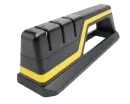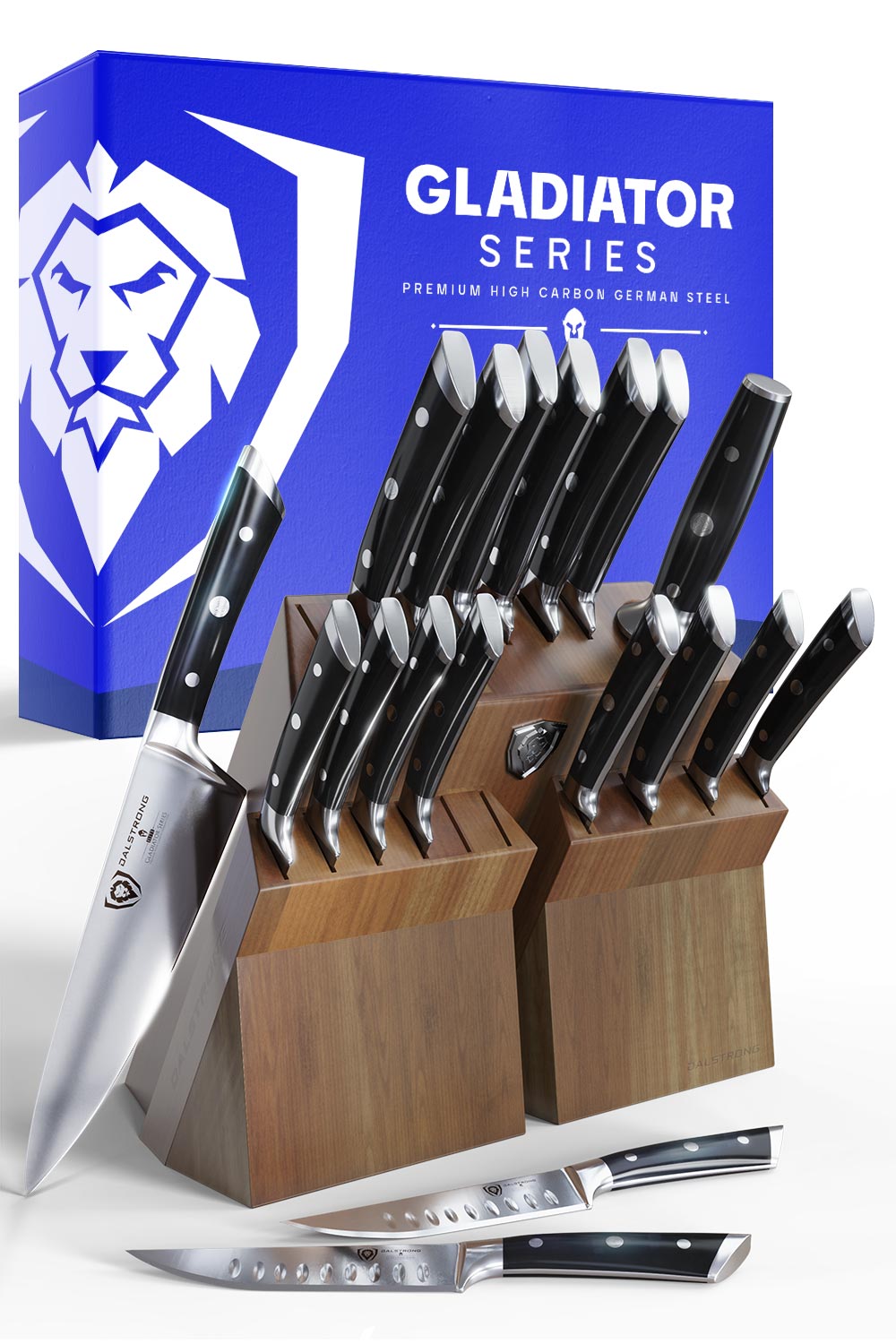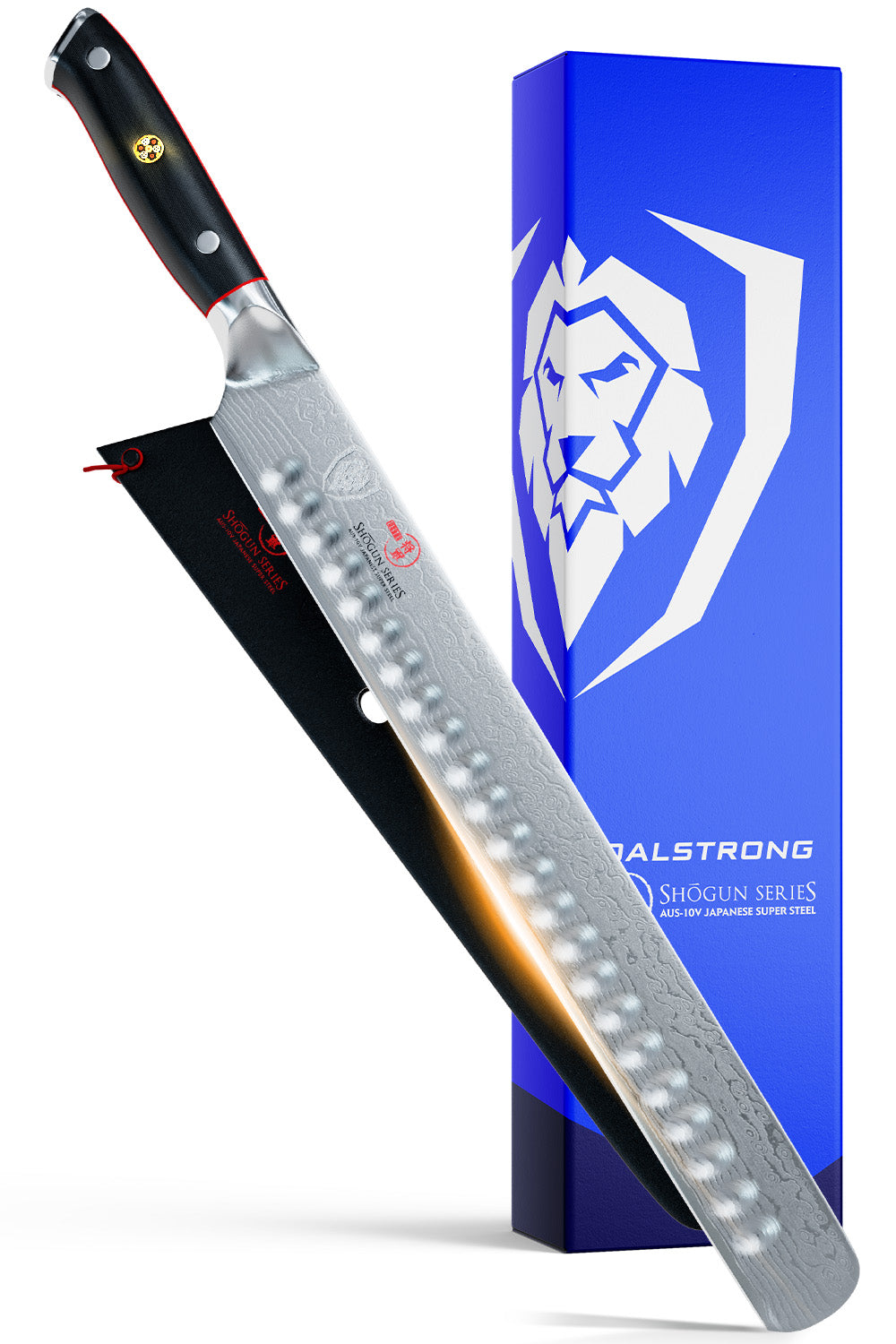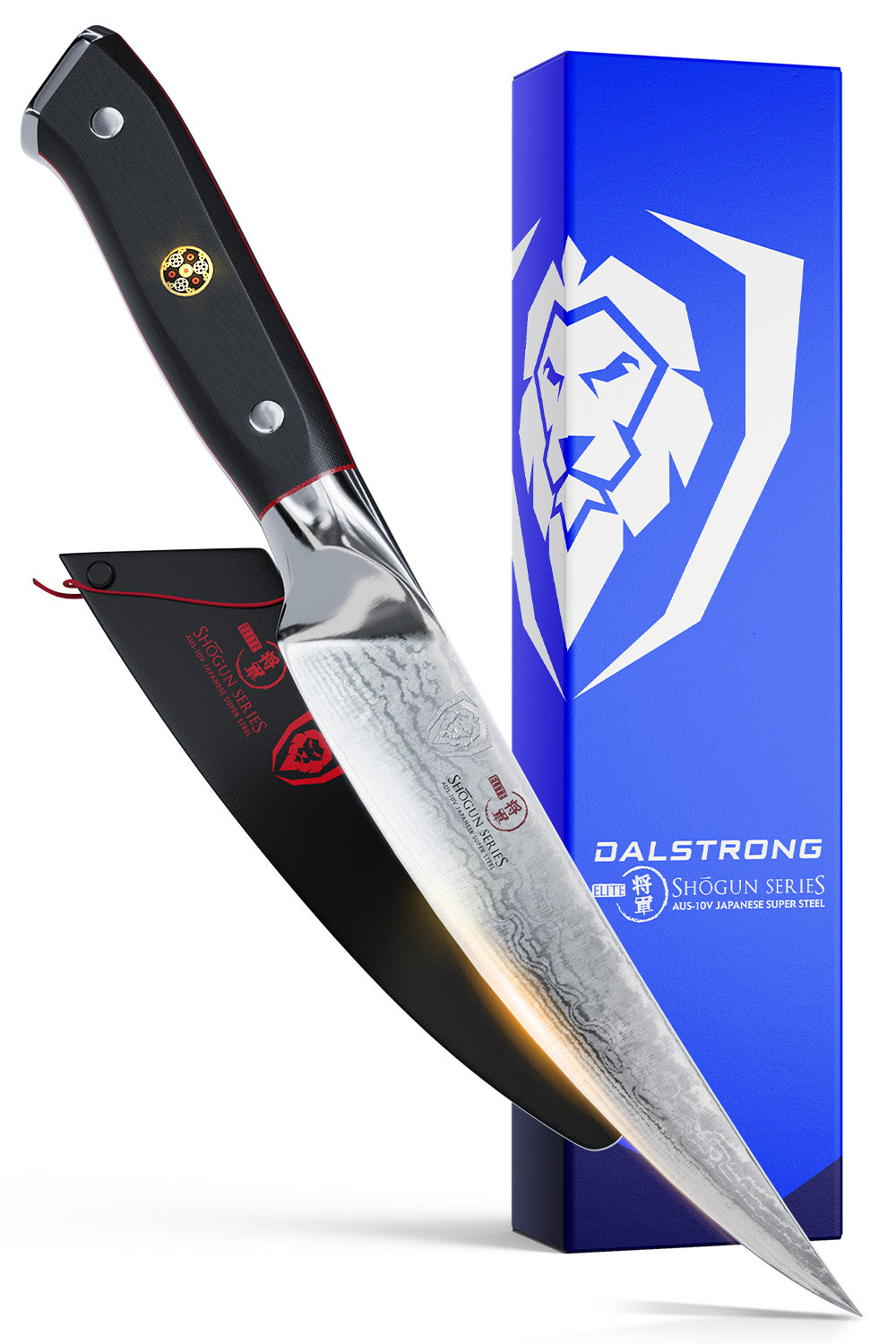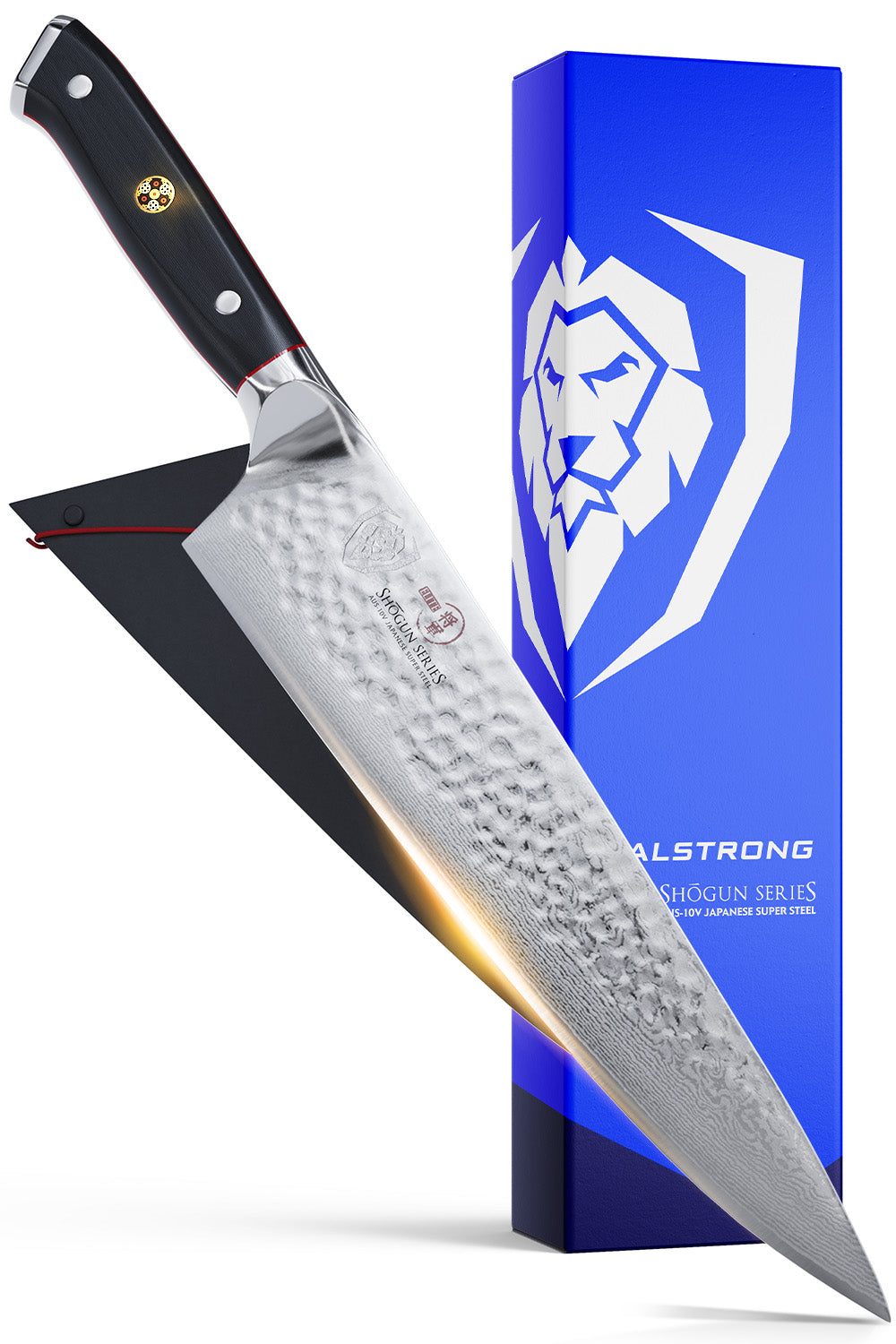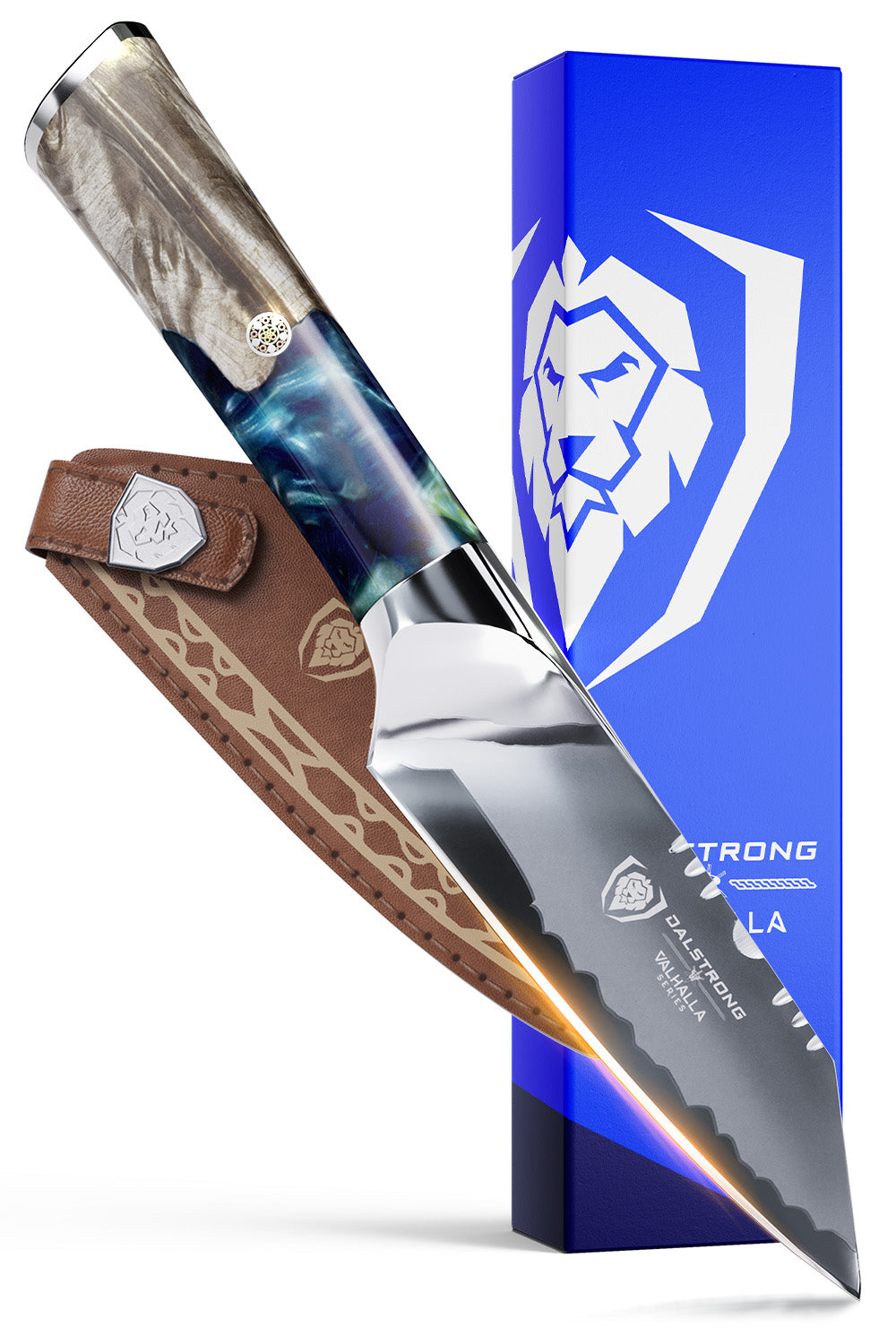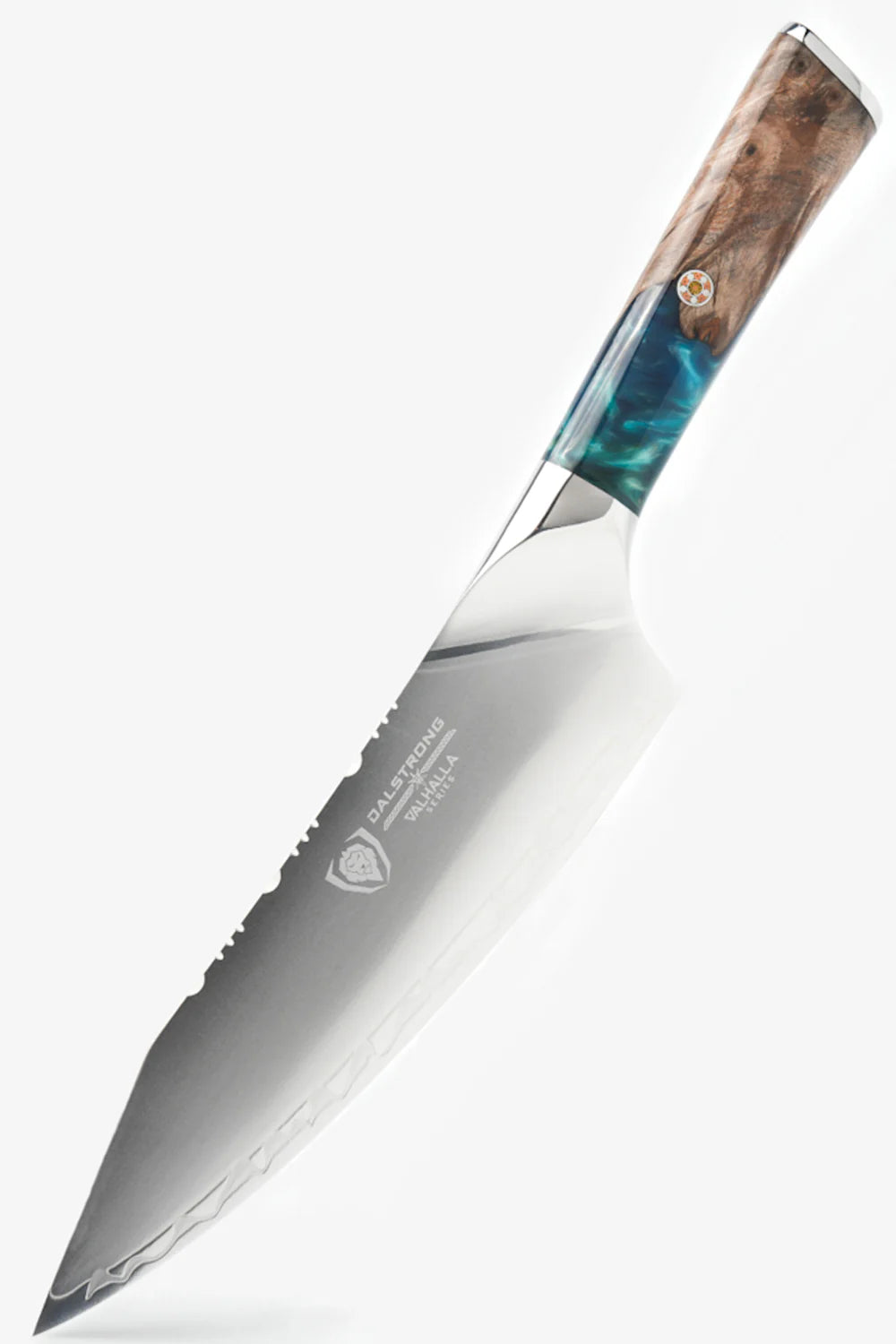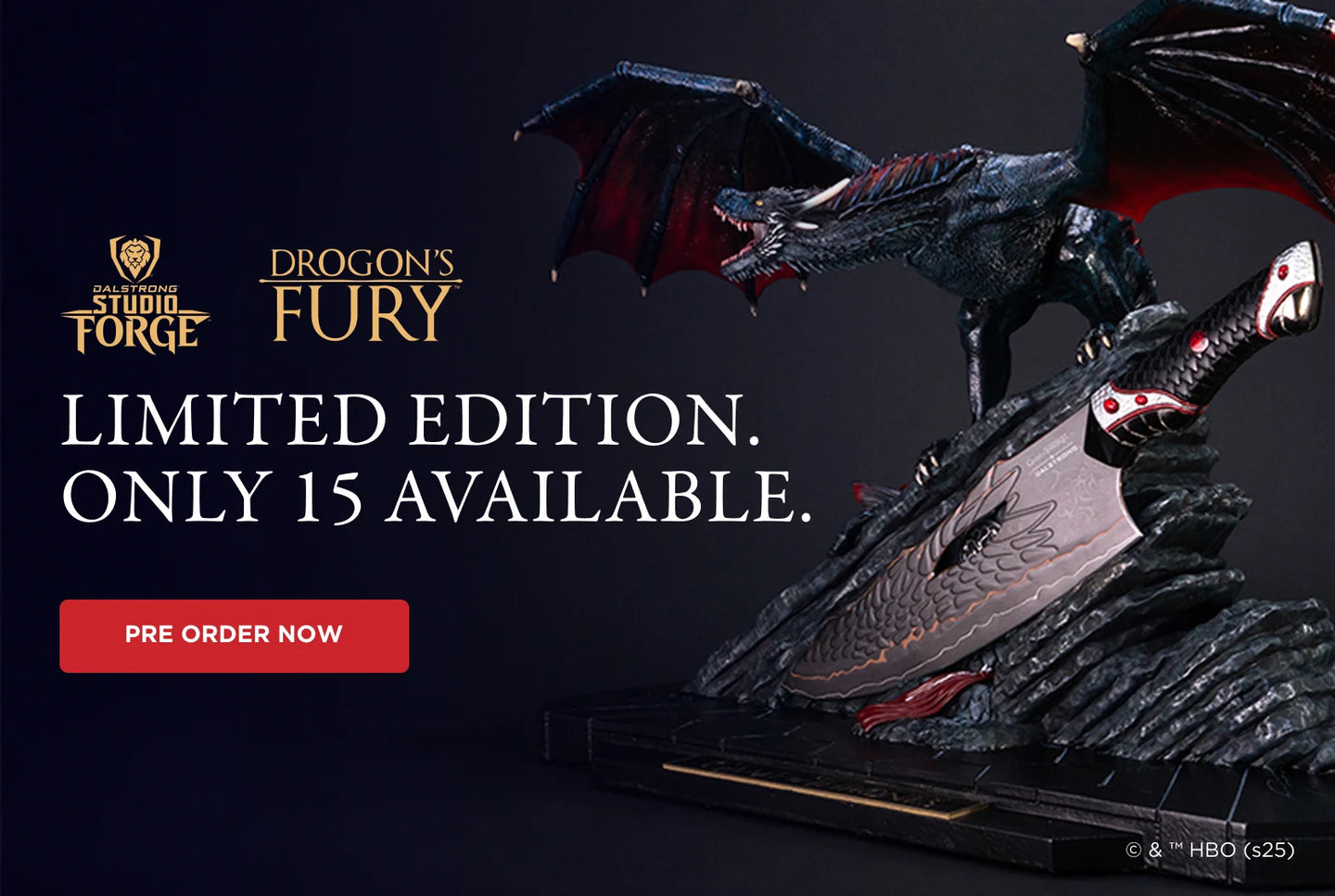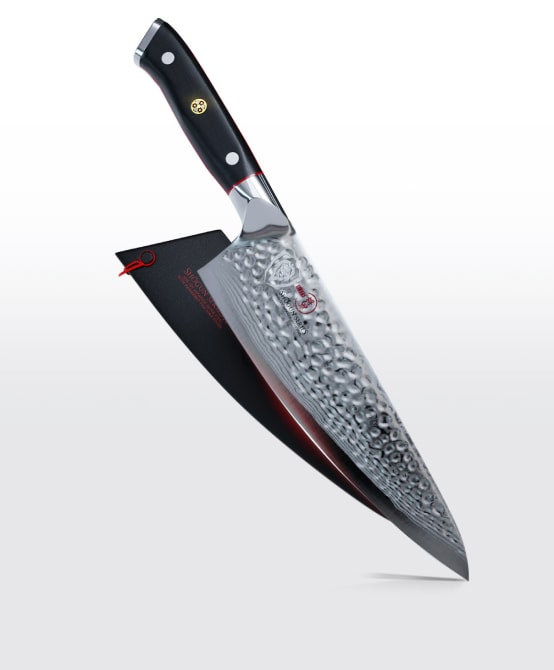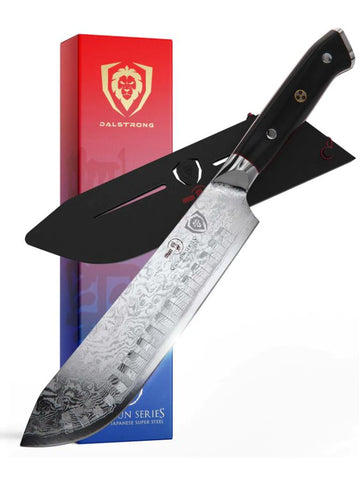When it comes to investing in knives in the kitchen, there are several different types that you can use, each designed for a specific purpose. Some of the most popular ones are carving knives, steak knives, utility knives, Japanese santoku knives, serrated bread knives, chefs knives, filet knives, cheese knives, and other specialty knives. Knives like cleavers and butcher knives also fall into this category.
However, some people think that these terms refer to the same knife type. You should know that a cleaver and butcher’s knife are very different by design. While both butcher’s knives and cleavers perform the same activities, the butcher knife’s robust construction makes it better for splitting, chopping, and stripping flesh, while the cleaver’s small blade allows it to do so more elegantly.
Read on as I talk more about butcher and cleaver knives, how different they are and how they compare with each other.
 Cleaver 9" The Banshee | Phantom Series | Dalstrong
Cleaver 9" The Banshee | Phantom Series | Dalstrong
1. What Is A Cleaver Knife?
Cleavers are used by butchers all around the world. A typical cleaver knife is a little similar to the traditional butcher’s knife. A cleaver is a large knife with substantial steel in the blade. The blade’s shape also changes between different knife manufacturers, but it’s mostly rectangular and much wider than any other kitchen knife. The length of the blade typically falls between 6-8 inches.
A cleaver's blade has a tough edge, designed to repeatedly cut into the meat, cartilage, and bones. However, the momentum and not the blade's sharpness gives the cleaver most of its power to get through bone and cartilage. Cleavers also need a sturdy handle that can grip comfortably and not fly out of your hand. Like most knives, you can find Western-style meat cleavers and Japanese meat cleavers.
Different Uses Of A Cleaver Knife
A cleaver knife is designed for chopping the meat into precise cuts. This is the go-to knife for prepping boneless meat that is easy to slice through. In comparison to a butcher knife, cuts from a cleaver knife are more precise and more gentle. The result is a smooth, clean cut.
Meat cleavers often have a hole in the corner. The purpose of this hole is not for hanging the cleaver up but to help reduce friction when cleaving into the meat. The hole helps the cleaver minimize getting stuck and makes it easier to pull in case it does get stuck. It is very useful to remove the cleaver from the meat if anything is holding it up when you make the chop. You can find more information in this blog about why a cleaver has a hole.
If you are working through processing a full carcass of meat, the cleaver probably won’t do it for you. However, with a sturdy cutting board and this strong-built cleaver knife, then you might just cut through a bone if you swing it with power.
2. What Is A Butcher Knife?
The traditional butcher's knife was designed over one hundred years ago. It has a very different look than the shape of a typical cleaver which is much taller and has a shorter, rectangular-shaped blade. The shape of a butcher's knife is designed for specific reasons. It features a wide blade and curved tip, which make it easier to use when trimming and slicing raw meat. The Butcher knife is also originally designed for skinning. Today, there are much better blades available if you need something specifically for skinning meat.
The length and shape of a butcher's knife also make it a great utility knife for hunting and camping. It’s perfect for all-purpose uses while outdoors, including skinning, butchering, portioning, and food preparation. This knife is designed to trim and dress meat. It can cut through bone and is much longer than a cleaver. The size of the blade of a butcher's knife can be around 14-inches.
Different Uses Of A Butcher Knife
If a butcher is working on a full carcass of meat with bone, they are more likely to use a butcher's knife because it can chop through bone easily. If the cleaver is more short and rectangular, a butcher's knife blade is long and sturdy. It can also be curved. What really stands out with a butcher knife is the ability to chop through bone easily.
A butcher's knife is designed for the entire butchering job. It’s great for butchering an entire animal, and that is what more butchers use this knife for. It is particularly useful for tough cuts or thick cuts of meat that the cleaver might struggle through. This is probably not a knife you would find sitting around in home kitchens unless you do some of your meat processing. The cut on the butcher knives is not always used for delicate cuts or something that needs a really clean or gentle finish. The cleaver is better for this purpose.
The blade of this knife can be anywhere from 6-14 inches. Most butchers that process large amounts of meat use longer blades as they can work for longer hours. Despite the long blade, the handle is still about the size of any other type of kitchen knife. You’re using this more for slicing, although there might be some chopping for thick meat or bones.
3. Comparison Overview: Cleaver Knife VS Butcher Knife
|
Characteristic |
Butchers Knife |
Cleaver Knife |
|
Best Uses |
Breaking down meat, bones, and firm fruits or vegetables |
Cleaver knives can also be used to break down the meat and firm fruits and vegetables. However, this works well only on small bones. |
|
Cutting Action |
Chop and saw meat, hack, slice, and trim |
Chop, hack, smash, split |
|
Blade Design |
Sharp upward, curved blade. This knife comes with a blunt or sharp point. |
Short, narrow, and broad that looks like a small ax. |
|
Blade Length |
8-10 inches or even longer |
around 4-8 inches long |
|
Sharpness |
Sharper with a 30 degrees edge angle |
This blade is blunter with a total edge angle of 40-50 degrees. |
|
Weight |
Many options are lighter than a cleaver |
Cleaver knives are generally heavier than a butcher knife. |
|
Price |
These knives are expensive. |
Compared to a butcher’s knife, a cleaver is less expensive. |
4. Cleaver Knife or Butcher Knife: Which One To Get?
A butcher's knife is the best tool for breaking down large cuts of meats that require a slicing or sawing motion. Cleavers with a walnut handle or hardwood handle work well on breaking bones and splitting chicken or duck. Hence, butcher knives and meat cleavers are not absolutely essential in your kitchen arsenal unless you’re a butcher or regularly break down large cuts of meats at home.
For a lot of home cooks, a quality chef knife is also a great buy. A chef’s knife is very versatile and can do a lot of things a butcher's knife or cleaver knife can, and at the same time use it for smaller kitchen tasks like mincing, dicing, and peeling. If you are an experienced chef you can also invest in versatile Japanese knives.
If you’re looking for a straight-edge knife especially to chop veggies, you can also go for a Chinese vegetable cleaver or Japanese vegetable blade like a Nakiri knife. Nakiris have an identical blade profile as vegetable cleavers and feature a razor-sharp edge. However, if you’re still interested in butcher knives, you can take a look at some of my top cleaver and butcher knife picks for you.
5. Unique Dalstrong Cleavers and Butcher Knives You Must Try
1. Cleaver Knife 7”- Shogun Series ELITE | Dalstrong
This cleaver knife is perfect for breaking down smaller cuts of boneless meats and poultry as well as slicing, dicing, mincing, and chopping tough vegetables and fruits of all kinds. The blade spine can be used to mince ginger or garlic while the sharp, flat edge results with more contact with the cutting board and exceptional precision.
Pros:
- The super-steel core of the blade possesses extra high carbon levels, allowing for scalpel-like sharpness with exceptionally long-lasting edge retention.
- The blade of this knife is nitrogen-cooled for enhanced harness, flexibility, and corrosion resistance.
- The blade’s spine is hand polished to a smooth finish for enhanced pinch grip comfort, making sure you arle to work for long hours without wrist fatigue.
Cons:
- You will not be able to break down large cuts of meat with ease as this knife has a short and broad blade.
- This cleaver knife comes with a heavy price tag that might not make this everyone’s preferred blade choice.
2. Cleaver Knife 9”- Shadow Black Series | Dalstrong
Here’s a razor sharp cleaver that does not mess around. The slight curve and the rock grip hollow of the blade near the bolster of the spine allows you to rock chop, while the extended edge provides a clean slice when used cleaver-style. This no-nonsense blade has the heft to cleave through meat and bone with ease, while the rigid teeth along the spine give it the grip you need for more hands-on work and push cuts.
Pros:
- The black, non-reflective titanium-nitride coating adds corrosion resistance, toughens the blade, and enhances non-stick properties, making this knife a ruthless tool in the kitchen.
- The edge of this knife is painstakingly hand-sharpened to 16-18 degrees per side, maintaining the perfect balance between blade sharpness and maximum resilience.
- This precision forged knife comes with an ultra sharp, wear-resistant blade that will ensure that this blade lasts you for generations.
Cons:
- This 9” cleaver can be lightly challenging to use. I recommend starting with a shorter 6 inch cleaver knife, getting used to it, and then testing out the bigger ones.
- The design and style of this all-black knife can be a little too bold for those who have a minimalistic sense of style.
3. Annihilator Meat Cleaver with Stand 14”- Gladiator Series | Dalstrong

The high carbon steel cleaver from the gladiator series is an utter beast of a blade, forged to destroy with a single chop. Whether breaking down a whole hog or gliding through squash, with this steel blade you’ll carve through everything that lies in its path with a razor-sharp edge that provides precision and accuracy.
Pros:
- This baby is a showpiece!
- The ergonomic handle provides maximum comfort, grip, and maneuverability.
- The full tang of the blade provides the knife with incredible robustness and quality.
- This knife may look intimidating, but it is very easy to maintain and cleans quickly.
Cons:
- Investing in this blade only makes sense if you are someone who deals with breaking down whole animal carcasses or large cuts of meat daily.
- Storing this knife can be challenging especially if you have a compact kitchen.
4. Bull Nose Butcher Knife 8”- Shoun Series ELITE | Dalstrong
The conservative 8” blade length provides exceptional control and allows any chef to further, longer, and with less fatigue. The blade sails through flesh, breakthrough cartilage and trims the fat from beef, pork, poultry, and fish.
Pros:
- This butcher-shop workhorse with a blade made of Damascus steel excels at breaking, sectioning, and portioning large cuts of meat,
- The blade is impervious to heat and moisture providing it with lifelong durability.
- The full tang of this knife provides it with maximum robustness.
Cons:
- Performing more delicate tasks can be challenging with this big and sharp knife.
- This bull nose butcher's knife comes with a big price tag so it only makes sense to invest in this knife if you handle large cuts of meat regularly.
5. Bull Nose Butcher Knife 10”- Delta Wolf Series | Dalstrong
With this machete-like knife, you will be able to cut through almost everything. Crafted of high-carbon steel, this blade is strong and durable enough to handle anything. The rounded edge of this knife extends its razor-sharp length and allows you to achieve longer, cleaner cuts.
Pros:
- The edge of the blade is painstakingly hand-sharpened to 8-12 degrees, giving you a razor-sharp cutting edge.
- The tapered design of this blade provides it with hardness and flexibility.
- The knife comes with high-tensile strength for maximum stability under rigorous action.
Cons:
- If you are new to the kitchen, this blade might be slightly intimidating to use. This is why you must practice with a short butcher's knife before investing in this mammoth.
- If you like blades with simple yet striking design, you can also take a look at this one from the Phantom series.
6. Frequently Asked Questions
What are cleaver Knives good for?
Cleavers made of Damascus steel or high carbon stainless steel can be used for doing various tasks such as but not limited to pounding, mincing, dicing, slicing a variety of other foods, and a lot more. These knives are not generally a part of home knife sets and would have to be bought separately.
Is a cleaver a butcher knife?
The cleaver is similar to the butcher’s knife but has a lighter and thinner blade for precision cutting.

































